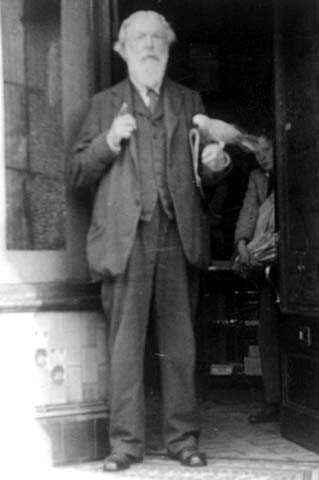(course for ArtScience, 2011/12)
One of the aspects of nature that has fascinated artists and scientists alike is the emergence of form. Living nature is full of forms, and what we see at any one time is just a snapshot in processes of growth or development. Thinkers have long sought to explain these processes of shifting forms in terms of purpose or in terms of underlying laws that would explain both the abundance and the transformations we see.
Since Darwin, a lot of this abundance can be explained by evolution theory, in which forms emerge by a process of variation and inheritance. Forms are in this view the result of an unimaginably long sequence of historical accidents, consolidated by the advantages certain forms have for survival. In the last fifty years, new kinds of evolutionary theories have emerged that emphasize the fact that evolution is constrained. According to these theories, selection operates in a context in which there are also laws of form that determine that some transformations are possible and some are not.
In this course we will read some original texts that trace this development of the concepts about growth and form in nature. The central text around which the course will be structured is the 1917 book ́On Growth and Form ́ by the Scottish zoologist d ́Arcy Thompson. This fantastic, idiosyncratic and inspiring book is full of observations on how biological forms can be explained from physical laws. He showed the similarity in the forms of jellyfish and the forms of drops of liquid falling into viscous fluid, and between the internal supporting structures in the hollow bones of birds and well-known engineering truss designs. Around this book, we will read texts and fragments by Johann Wolfgang von Goethe, Charles Darwin, Richard Dawkins, Brian Goodwin, Stephen Jay Gould, Richard Lewontin and Stuart Kauffmann.

D’Arcy Wentworth Thompson
texts:
D’Arcy Wentworth Thompson, ‘On Growth and Form’, (1942 full edition), Cambride University Press, 1942.
- full 1136 pages: dArcyThompson_GrowthForm1945_complete.pdf (78MB)
(taken from http://www.archive.org/details/ongrowthform00thom) - chapter 2, ‘On Magnitude’: dArcyThompson_GrowthForm1945_chap2.pdf (25MB)
- fragment on ‘the bee’s cell’: dArcyThompson_GrowthForm1945_bees.pdf (6MB)
- chapter 14, ‘On leaf-arrangement, or phyllotaxis’: dArcyThompson_GrowthForm1945_chap14.pdf (10MB)
Charles Darwin, ‘On the Origin of Species’, (first edition), John Murray, London, 1859.
- complete: Darwin_OriginSpecies1859_complete.pdf (97MB)
(taken from http://darwin-online.org.uk/contents.html#origin) - fragment on ‘Cell-making instinct of the Hive Bee’: Darwin_OriginSpecies1859_bees.pdf (3MB)
Johann Wolfgang von Goethe, ‘The Metamorphosis of Plants’, (translation by Douglas Miller, intro by Gordon Miller), MIT press, 2009.
(original ‘Versuch, die Metamorphose der Pflanzen zu erklären’, 1790)
- complete: Goethe_MetamorphosisPlants2009.pdf (2MB)
Edward Stuart Russell, ‘Form and Function, A Contribution to the History of Animal Morphology’, John Murray, London, 1916.
- chapter 7, ‘The German Transcendentalists’: Russell_FormFunction1916_chap7.pdf (3MB)
Brian Goodwin, ‘Development as a Robust Natural Process’, in ‘Thinking about Biology’, eds. Wilfred Stein, Francisco Varela, Santa Fe Institute Studies in the Sciences of Complexity Lecture Notes Vol. III, Addison-Wesley, 1993, pp. 123-148
- complete paper: Goodwin_DevelopmentAsRobust1993.pdf (6MB)
assignment:
1. in class, we have discussed examples of four theories about the origin and development of biological form: that of Darwin, that of d´Arcy Thompson, that of the transcendalists and the one proposed by Brain Goodwin. Please give a short general description of two of these positions and point out the main difference between them.
2. can you see parallels between these four views and the origin of form in a work of art ? (art in the widest sense of the term, not only visual art) Please work out a parallel between one of these views and one approach to form in art.
please send your responses to joost.rekveld (at) interfaculty.nl as a .rtf, .doc, .odt or .pdf, with ´assignment Growth, Form and Evolution´ as the subject of your email. Deadline is monday october 10.
further reading:
on ´neo-d´Arcy Thompsonism´:
– Philip Ball, ´The Self-Made Tapestry: Pattern Formation in Nature´, Oxford University Press, 1999
on neo-darwinism:
– Richard Dawkins, ´The Blind Watchmaker´, Norton & Company, 1986
on alternatives to neo-darwinian views on evolution:
– Lenny Moss, ´What Genes Can’t Do´, MIT Press, Boston, 2004.
– Susan Oyama, ´The Ontogeny of Information: Developmental Systems and Evolution´, 2nd edition, Duke University Press, 2000
– Stuart Kaufmann, ´Reinventing the Sacred: A New View of Science, Reason, and Religion´, Basic Books, New York, 2008.
on complexity theory
– Roger Lewin, ´Complexity: Life at the Edge of Chaos´
University of Chicago Press, 1992
– Steve Johnson, ´Emergence: The Connected Lives of Ants, Brains, Cities, and Software´, Simon and Schuster, New York, 2001
– Mitchel Resnick, ´Turtles, Termites, and Traffic Jams´, MIT Press, Boston, 1997
on chaos theory:
– Ilya Prigogine and Isabelle Stengers, ´Order Out of Chaos´, Bantam, New York 1984. (translated from the french original)
– James Gleick, ´Chaos: Making a New Science´, Vintage Books, New York, 1987
